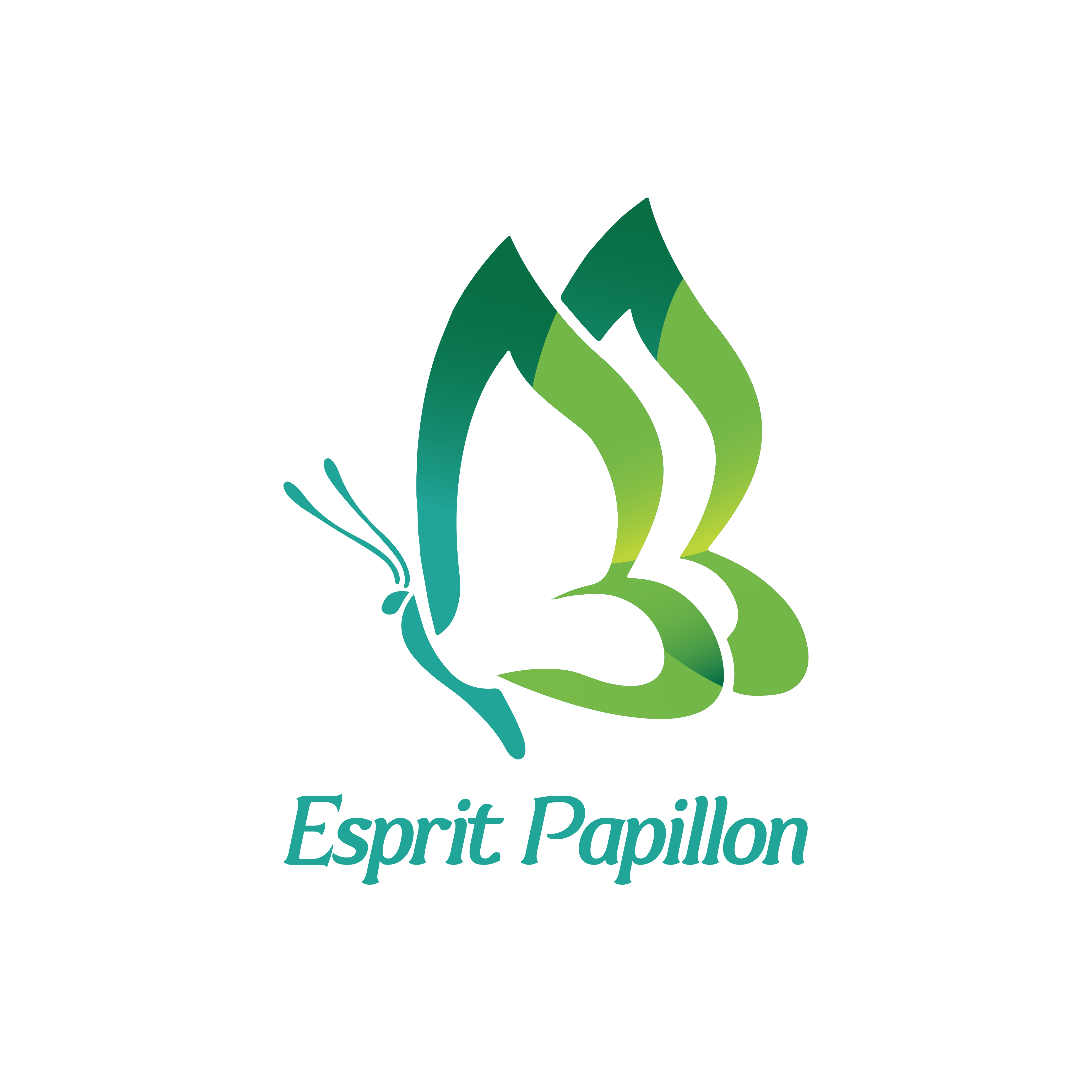In this article, we will explore a selection of the most beautiful species of brown butterflies and what they symbolize.
Are brown butterflies rare?
Encountering a brown butterfly is common. Brown pigmentation is prevalent in butterflies, whether in certain parts of the wing or as the predominant color.
However, they can be difficult to spot due to their color, which allows them to camouflage easily.
Butterflies with iridescent colors may also have brown undersides of their wings or natural brown spots, such as the Blue Morpho.
Where can they be found?
Brown butterflies are found abundantly on all continents, except Antarctica.
What do brown butterflies symbolize?
The symbolism associated with brown butterflies varies greatly depending on cultures and regions of the world.
Seeing a brown butterfly can symbolize that good news or important news will arrive soon.
Some beliefs suggest that when a brown or white butterfly enters the house, it is the spirit or soul of a loved one who died in the distant past; or that if a brown butterfly enters your home, it may be the spirit of a loved one coming to warn you in advance of an unfortunate event or misfortune that may occur; In general, this may mean that you need to be very careful over the next few days.
If the first butterfly of the season you see is brown, it may indicate misfortune; have a positive attitude and be very careful at this time.
In many cultures, especially in Filipino superstition, a brown butterfly represents money that will soon come your way. If it lands on you, it will bring you luck.
In some parts of Eastern Europe, it is believed that brown butterflies can be a bad omen or mean that bad news is on the way.
The most beautiful species of brown butterflies around the world
Junonia hedonia

Junonia hedonia is a butterfly that belongs to the Nymphalidae family.
It has a wingspan ranging from 50 to 65 mm. The upperside of its wings is dark reddish brown, with a series of reddish eyespots, particularly conspicuous on the hindwing. The butterfly flies in the usual hovering manner of Junonia species and can be seen basking in the sun with its wings spread flat.
It is found in Southeast Asia, Indonesia, and Australia. It can be found in urban, suburban areas, as well as nature reserves.
Hamadryas feronia

Hamadryas feronia, also called the Variable Cracker, is a species of butterfly in the family Nymphalidae.
It has a similar appearance to its counterparts Hamadryas guatemalena and Hamadryas iphthime. It has a wingspan ranging from 73 to 83 mm. The upperside of the forewing has a mosaic pattern of white, brown, and bluish-gray, with a row of small ocelli running parallel to the outer edge; a small red bar occupies the disc cell. The upperside of the hindwing is similar but has a few white spots and larger, more distinct ocelli. The underside of the forewing is white or whitish with dark markings, a small red bar, and a black submarginal eyespot, and the underside of the hindwing is white or whitish, with dark markings and blue rings containing eyespots larger near the rear edge.
This species is found in southern Texas and throughout most of Latin America. This butterfly prefers tropical forests.
Doleschallia bisaltide

Doleschallia bisaltide is a butterfly of the Nymphalidae family. It is also called Autumn leaf in English, because it imitates a leaf when its wings are closed. The dorsal side of its wings is golden brown with a dark brown apex. It has a wingspan ranging from 60 to 70 mm.
It is found in Southeast Asia and Oceania. It inhabits humid forests and can be found up to an altitude of 1400 meters.
Junonia coenia

Junonia coenia, also known as the ocellated butterfly, is a butterfly in the family Nymphalidae.
The color of the ocellated butterfly is mainly brown with some orange, black, white, blue, and magenta. The forewing has two orange bars and a white band, which surrounds a prominent black eyespot and borders a smaller eyespot. Both eyespots have a purple center. The hindwing is mainly brown with an orange band towards the edge and a white and brown margin. It also has two eyespots, one larger and one smaller, each with a black and white outline, and a center composed of black, blue, magenta, and orange. They also have blue-green highlights on their fore and sometimes hind wings. Their wingspan generally ranges between 50 and 65 cm.
It is found in all regions of the United States except the Northwest and is especially common in the South, coastal California, and throughout Central America. Its habitat consists of open areas with low vegetation and some bare ground. Its original ancestry was traced to Africa, which later diverged into Asia.
Carterocephalus palaemon

Carterocephalus palaemon, also called the Brome Skipper, is a small butterfly in the family Hesperiidae.
This butterfly has a wingspan ranging from 29 to 31 mm. The upperside of the wings is dark brown with golden spots. The basic underside pattern is similar, but the forewings are orange with dark spots, and the hindwings are rufous with cream spots edged in black. Both sexes are similar, although females are usually slightly larger.
The Brome Skipper once occurred in England and Scotland. Today it is only found in western Scotland. A program is underway to reintroduce the species to England. The butterfly has also reached parts of Japan but is threatened there. In North America, it is also known as the Arctic skipper and is found on northern coasts and extends to central Alaska. It has also been observed in central California and along the coast of Canada.
This butterfly is considered a woodland butterfly and breeds in and around damp woodland, favoring clearings and roads, and seems to have a particular attraction to blue woodland flowers. It can also be found in bogs, stream banks, and grassy forest openings in Britain and the northern United States. These butterflies can breed in open grasslands in Scotland. In forested areas, breeding sites are along rivers and down slopes.
Lyssa zampa
Lyssa zampa is a moth of the family Uraniidae.
This lepidopteran has a wingspan of up to 160 mm. It has a light stripe in the middle of the two brown dorsal wings. On the underside, there is a more or less equal scattering of dark streaks distal to the white band. Its hindwings have two tails, the longer one being more central. The ventral side has a smooth brown region distal to the light stripe and an undulating striation proximal to the stripe. Females have a slightly larger wingspan and body, which is typical of many moths and butterflies. Females are also slightly lighter in color.
This species is native to a wide area of tropical Southeast Asia: Indonesia, Singapore, Malaysia, Thailand, and the Philippines. It is also recorded in the Andaman Islands, southern China, the Himalayas, and occasionally in East Asia, including Taiwan, Japan, and South Korea.
It is most abundant from May to November, depending on the location. The genus Lyssa is generally classified as a nocturnal or crepuscular group, but this species has been found to be active both during the day and at night. It is also known for its emergence and massive migrations.





